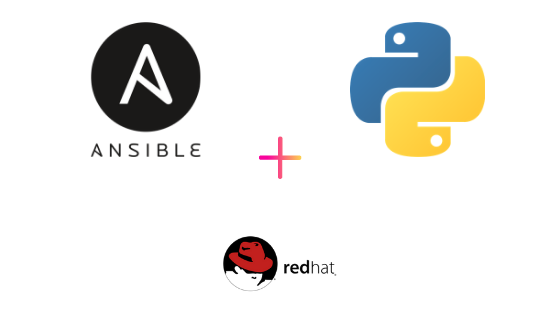
- Select a language for the TTS:
- UK English Female
- UK English Male
- US English Female
- US English Male
- Australian Female
- Australian Male
- Language selected: (auto detect) - EN
Play all audios:
In January, the U.S. signed the Phase One trade deal with China and removed Chinese tanker company COSCO (Dalian) from its sanctions list. In the months ahead, President Donald Trump will be
increasingly focused on the election. Does all this add up to fewer trade headaches for ocean shipping in 2020? Absolutely not, according to speakers at the
Hellenic-American/Norwegian-American Chambers of Commerce (HACC/NACC) Joint Shipping Conference held in New York on Tuesday. The forecast is for even more tariffs and sanctions trouble
ahead. TRADE TENSIONS COULD SHIFT TOWARD EUROPE According to Thomas Joyce, managing director at Deutsche Bank Securities, “It is a mistake to think the Phase One trade deal was a significant
step forward. It is a standstill agreement. I call it a giant agricultural purchase agreement — and it is not even that big.” Furthermore, any purchases agreed to by China are contingent on
economic conditions, and the coronavirus jeopardizes those conditions. The Trump administration has already admitted that the coronavirus will delay Chinese purchases. “Among the big policy
risks, the U.S.-China rivalry is at the top of the list, and the rivalry has just begun,” Joyce warned. “I fully subscribe [to the view that] Jan. 15 [when Phase One was signed] is probably
the best day we’ll see for U.S.-China relations for the next decade. We should not assume that this escalation is behind us. It has only just begun.” Joyce continued, “It is also a mistake
to think that tariffs are not coming to Europe. There’s a narrative out there that this is an election year and the election will act as a guardrail precluding the president from using
tariffs. I do not agree. It may convince him to not act as aggressively with Europe as he did with China last year, but it’s illogical to think tariffs are not coming to Europe. “Europe will
be reluctant to capitulate on agriculture [trade issues] and agriculture purchases are the centerpiece of trade deals, which of course feeds the president’s reelection campaign [by
appealing to farm-state voters]. “If Europe moves forward with carbon taxes, the U.S. will respond with tariffs. If Europe moves towards digital taxes, which disproportionately impact large
U.S. tech companies, the president has been very clear that he will respond with tariffs.” Joyce said global economic growth “has already been hit quite hard by the trade war,” and the
looming tariff threat to Europe “is a [new] concern for global growth.” Westbound container shipping rates between Rotterdam and New York are actually up around 15% during the past year
versus the prior two years. Tariffs could reverse that positive freight rate trend. ALL CORNERS OF SHIPPING NETWORK AT SANCTIONS RISK On the sanctions front, industry professionals speaking
at the HACC/NACC forum highlighted the unprecedented focus on shipping by the Trump administration. According to Gina Venezia, a partner at law firm Freehill, Hogan & Mahar, “This
administration has shown that it will continue to use economic trade sanctions as a centerpiece of its foreign-policy initiatives and will continue to target both those who operate within
the U.S. and those outside the U.S. “This administration is now focused on shipping in the same way that previous administrations focused on the banking system decades ago,” she said. “There
has been a defined shift in its focus towards shipping in the past 12 months. The administration is looking for everyone across the industry to be proactive and be sort of the ‘policemen’
of the sanctions world.” Ship insurers are led by property and indemnity (P&I) clubs. According to Daniel Tadros, chief legal officer of the American P&I Club, “For once, shipping is
being targeted. The administration is using sanctions as a weapon and it is impacting every part of the shipping sector. “The U.S. government is meeting with the P&I clubs on a regular
basis and putting pressure on the clubs to develop AIS [automatic identification system; ship location] programs to follow vessels, and if they go into designated areas, to alert the
government.” A meeting is being held Wednesday in Washington between administration officials and flag states, the countries that register vessels. “They’re putting pressure on the flags to
have similar AIS tracking programs,” Tadros said. The world’s second-largest flag state is the Marshall Islands. According to Meredith Kirby, general counsel of the Marshall Islands
Registry, “I’ve already been to about five of these meetings hosted by the State Department, and what they’re trying to do is crack down on the whole chain. They want everybody involved in
shipping to have skin in the game. What I was told by a person in State is that we [in shipping] all kick the can and [point the finger at other people in shipping]. So, they want everyone
along the line to be accountable: flag, class, operators, banks, insurance, everyone.” Kirby said the Trump administration’s “hair-trigger” sanctions stance “is definitely a game changer.”
Tadros noted that “in the maritime industry, the primary currency is the U.S. dollar and that’s the weapon the U.S. government is focusing on.” Companies that violate sanctions might be
barred from the U.S. financial system. “What they’re trying to do is change the culture of shipping when it comes to due diligence and accountability,” Tadros said. “That’s a big shift and a
big ask.” SHIPPING CONSEQUENCES OF AMERICAN UNILATERALISM Whether through tariffs or sanctions, the shift toward U.S. nationalism and unilateralism under the Trump administration has
multiple consequences for ocean shipping. Tariffs are overwhelmingly viewed as a major negative for ocean shipping, both in terms of vessel demand and equity valuations of listed owners. To
the extent trade barriers do not simply redirect trade flows but reduce overall volume, it’s bad for freight rates. Sanctions have a more complicated relationship with shipping bottom lines.
In the negative column, the costs of compliance are high. Employees require special training, compliance programs must be developed and implemented, and pricey maritime lawyers must be
consulted. Another negative: Ship operators can be ensnared by U.S. sanctions through no fault of their own. If a ship owner is not given accurate information on the origin of the cargo
being carried, it is left “in an absolutely untenable position,” said Matthew Thomas, a partner at law firm Blank Rome. Tadros reported that “recently, a lot of owners have been asking for
certifications of the origin for cargo, and a lot of those certificates are now turning out to be fraudulent.” There is a positive side to sanctions, as well. By preventing certain trades
from accessing the dollar payment system, the U.S. government is essentially cleaving the global fleet in two. This reduces the overall efficiency of the global shipping network, which is
effectively the equivalent of reducing vessel capacity, a plus for rates. The COSCO situation was a perfect example. When those sanctions were put in place in September, 26 tankers were
suddenly removed from the market. Tanker rates immediately shot up. Those tankers were just re-injected into the market. Rates are now falling. _MORE FREIGHTWAVES/AMERICAN SHIPPER ARTICLES
BY GREG MILLER_








